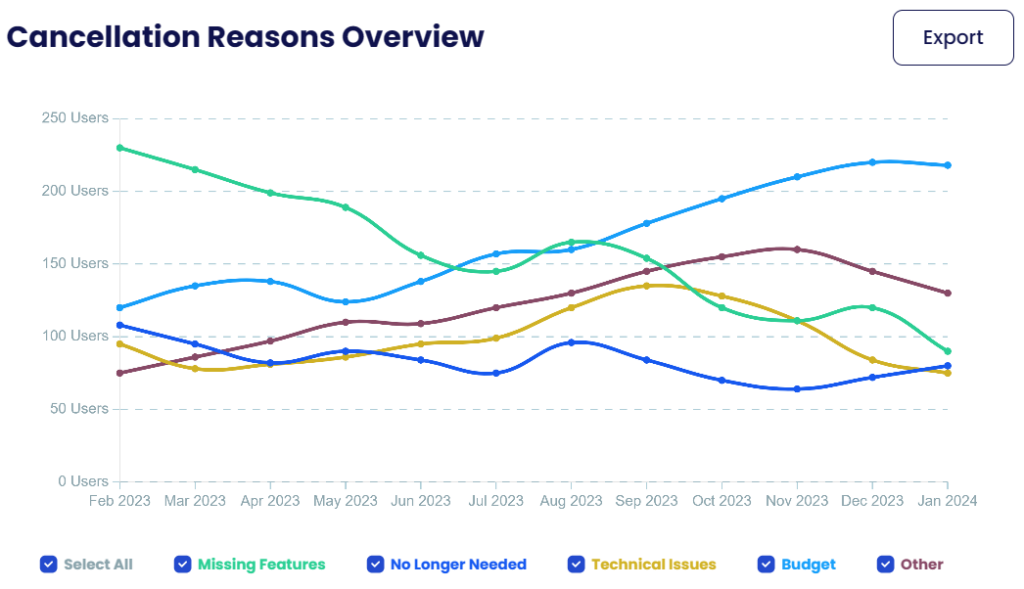ARTICLE
Understanding Net Revenue Retention: How to Calculate it?

Of all the measures of the evolving business world, perhaps there are none so vital as Net Revenue Retention, or NRR. It’s a formula applied as a measure of the efficiency with which a firm can grow and retain existing customers over time. In this in-depth guide, we’ll become the experts on the ins and outs of Net Revenue Retention, why it’s crucial, and how to accurately measure and utilize it in achieving business success.
What is Net Revenue Retention
Net Revenue Retention, or “NRR” or “ret rate,” is a key metric that can be used to gauge the health of a company’s customer base. NRR is simply the percentage of recurrent revenue retained in its current customer base over an interval, traditionally one year. NRR does account for revenue lost due to customer churn, as well as incremental revenue achieved due to upselling, expansion, or upgrading current customers.
Why is Net Revenue Retention Important?
Net Revenue Retention is an excellent indicator of how stable a firm’s revenue, customer satisfaction, and overall performance are. And here’s why it’s important:
Revenue Stability:
A high Net Revenue Retention implies that a company is able to retain its existing customers and prevent the revenue decline to churn. Stability gives an organization a reliable foundation for sustained business and revenue growth in the long term.
Customer Satisfaction:
A high rate of retention naturally implies happy customers and those enjoying the product or service. The happy customer will pay to renew a subscription, purchase again several times, and recommend their brand, which totals up to incremental income and future success.
Cost Efficiency:
Getting new customers tends to cost more than keeping the existing ones. An excellent Net Revenue Retention rate indicates that a company is getting the maximum revenue it can from its existing customers, thereby reducing the need for costly customer acquisition efforts and increasing profitability in general.
How to Calculate Net Revenue Retention:
The calculation of Net Revenue Retention is quite straightforward:

- Revenue at End of Period:
It is the amount of revenue from existing customers as of the end of the measurement period.
- Revenue at Beginning of Period:
It is the revenue earned from repeat customers at the beginning of the measurement period.
- Churn Rate:
Churn rate is the ratio of revenue that is lost due to customer churn (attrition) during the period. Churn Rate should be measured and tracked properly to compute Net Revenue Retention.
- Expansion Rate:
Growth rate is the rate of revenue acquired through upsells, expansions, or upgrades in the existing customer base during the period. This metric measures a company’s capacity to extract incremental revenue from its existing customers through value-added products or upgrades to services.
Using these metrics in the equation, businesses can calculate their Net Revenue Retention rate and derive valuable insights about their revenue growth and retention performance.
Recommendations to Increase Net Revenue Retention:
Achieving Net Revenue Retention and sustaining high Net Revenue Retention involve close attention to customer satisfaction and loyalty. Among the following are proven methods of enhancing Net Revenue Retention:
Customer Success as a Prime Goal:
Give utmost priority to customer support and service so that customers can reap maximum benefit out of your service or product. Intimate engagement and personalized support can help in establishing a strong bond and supporting customer retention.
Identify and Resolve Churn Causes
Transform churn data into common causes of customer churn and resolve them in advance. The awareness of the reason for churn enables companies to take professional actions to limit customer churn and increase the retention ratio.
You can transform churn data into common causes of customer churn with Churn Solution.

Deploy Upselling and Cross-Selling Strategies:
Identify opportunities to cross-sell or upsell additional products or features to current customers. Through the provision of timely upselling offers that are tailored to the interests and requirements of each customer, businesses can generate greater revenue growth and customer life value.
Provide Variable Pricing and Subscription Plans
You will need to provide various pricing and subscription options that are custom-suited to individual preferences and price affordability profiles of your customers. This is because dynamic pricing systems and adjustable subscription plans will drive customers to have higher satisfaction and loyalty levels.
Review and Update Strategies Periodically
Track Net Revenue Retention metrics regularly and strategically adjust as needed to optimize customer retention and revenue growth. Agility and responsiveness to changing marketplace trends and customer opinions enable companies to reset retention strategies to optimize effectiveness and long-term success.
Ultimately, Net Revenue Retention is an important metric that provides insight into whether a company can retain and grow its existing customers. Companies can drive customer satisfaction, revenue stability, and profitability in order to perform better with the insight to maximize and track Net Revenue Retention. Through action-oriented and combined strategies and initiatives, organizations can initiate retention support and create enduring growth amidst today’s fast-paced pace competitive world. With Chun Solution, you can stop churn before it occurs, generate top-line revenue, and thrive long-term.
















